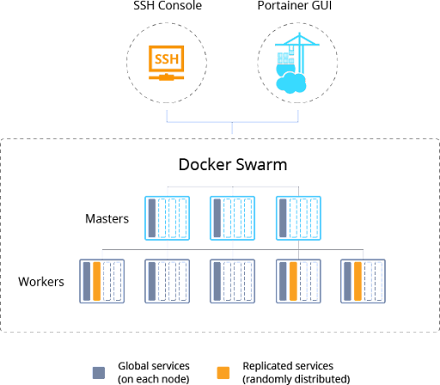What is dockers and how’s its implemented
Overview
It is an open platform that is used for developing, shipping and running applications. Docker gives you the power to separate your applications from the main infrastructure so that you can deliver software quickly. Using docker, you can manage your infrastructure in the same way. You can take advantage of docker.
With thousands of companies using the data log for monitoring their applications and infrastructure. Moreover, we can also see software trends emerging in the real time. More than 10,000 companies and 700 million containers in real time are using their services. Nearly one quarter of companies are using docker.
You can surely predict one thing now which is, docker is going to be adopted by most of the companies in future. Let’s have a look at the docker platform.
Docker Platform.
These containers are lightweight and contain everything that you need to run the application. Now, you don’t have to rely on the currently installed applications on host. You can easily share containers while using your work, and make sure everything is smooth.
You can easily develop your application and its supporting components using the container. Moreover, the contains becomes the unit for testing and distributing your application. Let’s have a look at the Use of docker.
What is the usage of Docker?
It helps you for fast, consistent delivery for your applications. Docker focuses the development lifecycle that allows developers to work in a standardized environment. Moreover, using local contains which provides your services and applications.
• Consistent delivery of applications: Containers are great for continuous delivery and continuous integration (CI/CD) workflow. The developers write code that is locally written and they can share their work with colleagues.
• Responsive deployment and scaling: The container-based platform allows for highly portable workloads. The docker containers can easily run on the developer’s local laptop. On your physical or virtual machines in a data center. On the cloud providers or the mixture of environments.
• Running more workloads on a single hardware: Docker is a lightweight and fast platform where you can easily work for long hours. It provides alternatives to the hypervisor-based virtual machines. So, you can use more of your computer capacity to achieve your business goals.
These are some of the usage of docker platform. You can easily use these tricks and techniques to get the best use of your platform. Docker is perfect for the high-density workload’s environments and for small and medium deployments where you need to have more than fewer resources.
Let’s have a look at the Docker architecture.
Docker uses the client-server architecture. The Docker client talks to the Docker daemon. Moreover, it does the heavy lifting of building, distributing your docker containers. The docker client and daemon can run the same system.
Here is the architecture of docker architecture.
• The Docker daemon: The docker daemon listens to the input from the Docker API. It manages Docker objects like images, networks, volumes, containers, etc. A daemon can also communicate with other daemons to manage the Docker services.
• The Docker client: It is the primary way that many Docker users can interact with Docker. When a command is given to the client, the client sends it to dockerd, which carries them out.
• Docker desktop: It is an easy-to-install application for your Mac or Windows environment. Which enables you to build and share containers, applications and microservices. Docker desktop includes the Docker daemon and the Docker client.
• Docker registries: The Docker registry stores the images. The docker hub is a public registry that anyone can use. You have the power to run your own registry. When you use the docker pull and docker run commands, it requires the images to pull from the configured registry.
• Docker objects: When you use the docker platform, you can create and use images, containers, networks, plugins, volumes, and other objects.
This is an overview of docker architecture. You can use this architecture to enhance your productivity. Here is the underlying technology using which you can easily implement the Docker technology.
The Underlying Technology Used For Implementing Docker.
The docker is using the Go programming language and takes the advantage of several features of the Linux kernel for delivering its functionality. It is used for a technology that is called namespaces. Moreover, it provides an isolated workspace called the container. When you run a container, the docker creates a set of namespaces for that container.
This namespace gives the layers of isolations. Every aspect of the container runs in a separate namespace and it can be easily accessible to the limits to that namespace. When you run a container, docker creates a set of namespaces for that container.
Let’s have a look at the final thoughts.
Docker is a great platform and you can implement it to boost the performance of your websites and cloud business. It helps the businesses to share and implement data and transfer it easily remotely. You can get ready about installing docker and get hands-on experience with the getting started tab.




Comments
Post a Comment